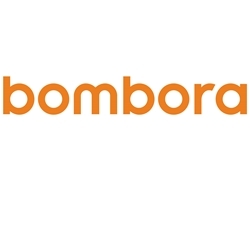In 1999, Seth Godin started a movement.
His premise was simple: People hate to be interrupted, but that's exactly how traditional marketing operates.
TV commercials, magazine ads, pop ups, banners, and even billboards work primarily by first interrupting someone, and second (hopefully) holding their attention.
Here's the problem:
- People want to listen to their favorite songs—not ads.
- They want to watch their favorite shows—not commercials.
- They want to see the blue sky—not billboards.
- ...and don't even get me started on the tragedy that is the modern recipe site.
In the traditional "interruption-marketing model," we begin with annoying our prospects and then trying to win their favor back.
Seth proposed a new way forward: "Permission marketing is the privilege (not the right) of delivering anticipated, personal, and relevant messages to people who actually want to get them."
For Seth, it was all about respect.
By asking for permission to engage, we're actually doing two things:
- We're showing our customers that we value their time and attention enough to not take it for granted.
- We're opening ourselves up to the risk of them saying "no"—which means our content had better be top-notch.
In addition to being a more respectful approach to marketing, permission marketing has some other awesome benefits: It tends to be much more effective and much less expensive. If someone willingly wants to sign up for your email list, you don't have to keep paying for intrusive and less effective "spray and pray" ads to grab their attention.
Despite the wonders of permission marketing, it comes with one big flaw: How do people find out about you in the first place?
For people to give you permission to market to them, they first have to know that you exist. And that is typically accomplished via—you guessed it—interruption-marketing tactics. So we're right back to the method we were trying to distance ourselves from in the first place.
So, what do we do? Can we somehow achieve a high level of respect and efficiency in our awareness campaigns before someone knows about our brand?
With intent data, we can.
Intent data tells us which businesses are most likely to be interested in receiving our calls and content before they even knew who we are. It provides the opportunity to follow the buyer's lead and market to them only when they've indicated they're in-market for specific solutions.
Welcome to the future of B2B marketing
Almost half of B2B buyers settle on a solution before ever reaching out to a salesperson, and we all know how they're doing it: They're doing their own research online.
Third-party intent data providers, such as Bombora, collect all the digital breadcrumbs your buyers leave behind as they're on their buying journey across the Web; then, based on that activity, the data providers surface which prospects are actively showing interest in your product or service. That provides organizations the opportunity to deploy buyer-led ABM campaigns and prioritize resources more effectively.
Now you know which prospects want to hear from you, and what topics they're most interested in learning about, so you can be more relevant and timely.
'Ben Howell, head of demand generation and paid digital (Americas) at Salesforce explained it this way: "We can hear them sneezing, and we go offer them a Kleenex."
Voila! You're at the right place at the right time with the right prospects.
And perhaps equally important: you know the businesses who aren't interested or ready to buy.
Mr. Godin would be proud as you stop wasting marketing budget pestering uninterested customers with unnecessary "interruption marketing" that gives them a negative impression of your brand before they even enter their buying cycle.
So, how do you know whether it's working? Do your customers tell you they're glad you called?
If not, maybe it's time you tried adding intent data and a buyer-led approach to your marketing efforts.
Schedule a demo with Bombora to see the future of B2B marketing in action, and learn how you can stop hearing "I'm not interested,"" and start hearing "This is exactly what I was looking for!"
This article is authored by Kate Athmer, VP of growth at Bombora, where she is primarily responsible for generating demand and fueling growth by finding ways to help customers extract more value from their investments in Intent data.




